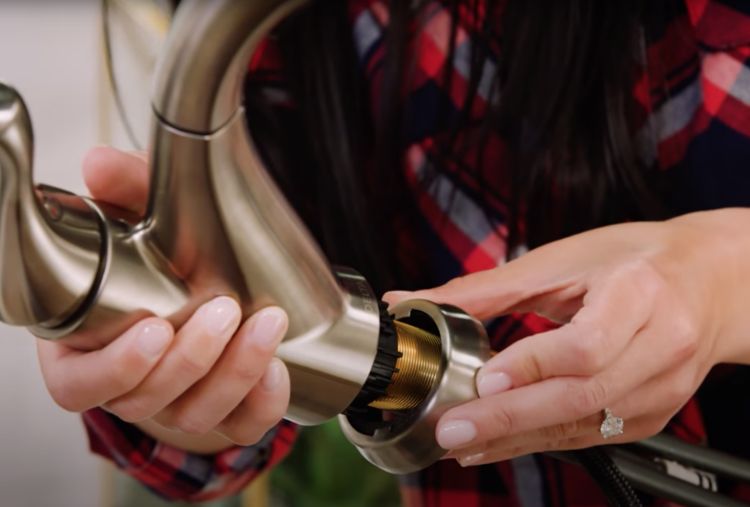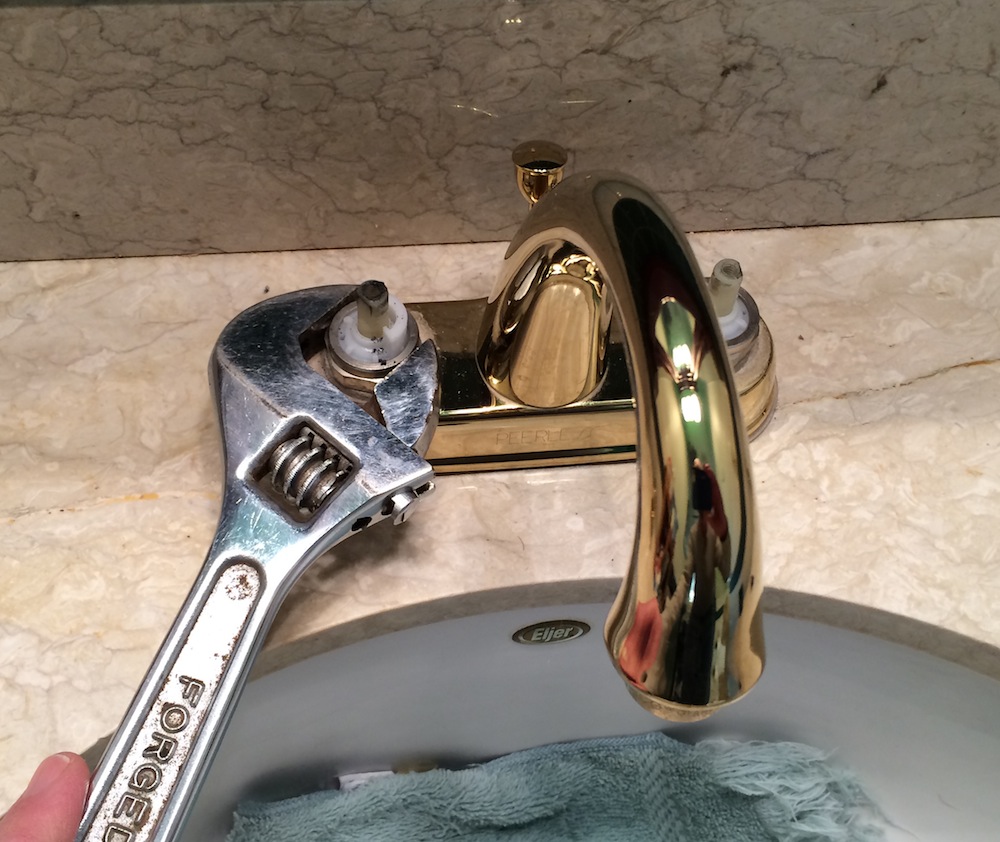Why It's Necessary to Repair a Dripping Faucet
Why It's Necessary to Repair a Dripping Faucet
Blog Article
Right here on the next paragraphs you can find lots of very good resources around Leaky Faucets: Why They Happen & What to Do About Them.

Trickling faucets might look like a minor trouble, but their impact exceeds just the annoyance of the noise. From drainage to sustaining unneeded monetary costs and health and wellness risks, overlooking a dripping tap can bring about various repercussions. In this post, we'll explore why it's essential to address this typical house concern immediately and properly.
Waste of Water
Ecological Influence
Leaking taps contribute substantially to water wastefulness. According to the Environmental Protection Agency (EPA), a solitary faucet dripping at one drip per secondly can lose more than 3,000 gallons of water per year. This not just pressures water sources but also affects environments and wild animals based on them.
Step-by-Step Overview to Taking Care Of a Dripping Tap
Tools Required
Before trying to deal with a trickling tap, gather the required tools, consisting of a flexible wrench, screwdrivers, replacement parts (such as washers or cartridges), and plumber's tape.
Usual Faucet Issues and Their Solutions
Identify the type of tap and the particular issue creating the drip. Typical troubles consist of worn-out washing machines, corroded shutoff seats, or defective O-rings. Describe producer guidelines or online tutorials for detailed guidance on fixings.
Financial Costs
Boosted Water Bills
Beyond the ecological impact, leaking taps can blow up water bills considerably. The collected wastefulness in time equates right into greater utility costs, which could have been prevented with prompt fixings.
Potential Home Damages
Additionally, long term trickling can cause harm to components and surfaces surrounding the faucet. Water accumulation can create discoloration, deterioration, and even structural issues if left neglected, leading to additional repair prices.
Wellness Worries
Mold and Mold Growth
The constant visibility of wetness from a dripping tap produces a perfect setting for mold and mold growth. These fungis not only jeopardize indoor air high quality yet likewise pose health and wellness threats, especially for people with respiratory conditions or allergic reactions.
Waterborne Diseases
Stagnant water in leaking taps can become a breeding place for microorganisms and various other virus, increasing the risk of waterborne illness. Pollutants such as Legionella germs prosper in stationary water, possibly bring about serious illnesses when ingested or breathed in.
Do it yourself vs. Specialist Fixing
Benefits and drawbacks of Do It Yourself Repair Work
While some might attempt to deal with a leaking tap themselves, DIY fixings come with their very own set of difficulties. Without correct understanding and devices, DIY attempts can worsen the problem or lead to incomplete fixings, prolonging the issue.
Advantages of Working With a Professional Plumber
Employing a specialist plumber ensures that the underlying reason for the leaking tap is addressed effectively. Plumbing technicians have the competence and tools to detect and fix tap concerns successfully, conserving time and decreasing the threat of more damage.
Ecological Obligation
Individual Contribution to Preservation
Taking obligation for taking care of trickling faucets straightens with wider efforts towards water preservation and ecological sustainability. Every person's activities jointly make a significant impact on maintaining priceless resources.
Sustainable Living Practices
By focusing on prompt repair services and adopting water-saving routines, individuals add to lasting living practices that profit both existing and future generations.
Preventive Measures
Normal Maintenance Tips
To stop dripping faucets, do regular maintenance such as cleaning up aerators, evaluating for leaks, and replacing worn-out components without delay. Additionally, consider setting up water-saving gadgets or updating to a lot more reliable components.
Importance of Prompt Repair Works
Dealing with leaking taps as soon as they're discovered stops additional water waste and prospective damage, ultimately conserving both water and cash over time.
Effect On Building Worth
Understanding of Well-Maintained Home
Preserving a building in good condition, consisting of addressing upkeep problems like trickling taps, enhances its viewed value and charm among prospective buyers or occupants.
Influence on Resale Worth
Residences with well-maintained plumbing fixtures, consisting of faucets, command higher resale worths in the real estate market. Dealing with trickling taps can contribute to a favorable impact during home examinations and settlements.
Conclusion
Dealing with a trickling faucet exceeds plain convenience; it's a necessary action toward saving water, lowering economic costs, and securing wellness and property. Whether through DIY repair work or expert help, doing something about it to deal with trickling taps is a tiny yet impactful means to advertise liable stewardship of sources and add to a much healthier, a lot more lasting future.
How to Fix a Leaky Faucet: Step-by-Step Repair Guide
A leaky faucet may seem like a simple annoyance, but if it's not fixed promptly, that leak could cost hundreds to potentially thousands. From water damage to mold, mildew, and high water bills, even a tiny leak can be catastrophic if left unattended. Damage like this can even affect the overall value of your home, so it's important to take the right approach for leaky faucet repair. You may need the help of a plumber in some cases, but we've got a few tips you can try on how to fix a leaky faucet before calling the pros.
Four Faucet Types
When you're learning how to fix a leaky faucet, the first step is knowing what kind of faucet you're working with! There are four common types.
Cartridge Faucets
Cartridge faucets come in one- or two-handled varieties. In one-handled cartridge faucets, hot and cold water combines in a single cartridge. In the two-handled versions, hot and cold water are controlled separately and mixed in the faucet.
Ball Faucets
Ball faucets have a single lever you push up and down to adjust the pressure and rotate to change the temperature. A slotted metal ball controls the amount of water allowed into the spout.
Compression Washer Faucets
They're the oldest type of faucet, but they're still used in many homes — especially older ones. Compression faucets have two separate handles that, when turned, raise or lower the washer that seals a water valve. This valve stops water from flowing through the faucet when it is turned off.
Disc Faucets
Disc faucets rarely need to be repaired due to their maintenance-free design. The water flow is controlled by two discs — the upper one raises and lowers against a fixed lower disc, creating a watertight seal. If your disc faucet starts leaking, you may need to replace the seals or clean residue buildup from the inlets.
Fixing a Leaky Faucet
Step 1: Turn Off the Water
Whether you're learning how to fix a leaky bathtub faucet or how to fix a leaky kitchen faucet, always turn off the water supply to your working area when you're fixing a leak. The last thing you want is a flood added to your list of things to fix.
Look for the shutoff valves below your sink or around the tub and turn them clockwise to stop the water flow. If your faucet doesn't have shutoff valves, you may need to turn off the water for the whole house. Check to make sure it's off by turning the faucet on. If nothing comes out, you're ready to start the repair.
Step 2: Take Apart the Faucet
How you disassemble your faucet depends on the type of fixture you have. You can use a flathead screwdriver to remove the caps on top of the handle or handles for cartridge and compression faucets. Inside, you should see handle screws. Unscrew these with a screwdriver to remove the handle.
Disc- and ball-style faucets will typically have an inlet screw near the handle, and removing that will reveal the interior of the faucet.
Detach the Valve Stem
For cartridge- and compression-style faucets, you'll see the inner valve stem or cartridge once you remove the faucet handles. If you have a compression faucet, unscrew the brass valve stem. If you have a cartridge faucet, pull out the cartridge. If your cartridge has been in place for a while, it may require some tools or extra force to remove it due to mineral deposits.
Examine and Replace Parts
Once you've removed the parts, check them out to confirm what needs to be replaced. You may see corroded rubber washers, O-rings, stems, or cartridges. On a ball-style faucet, check the seats and springs for damage.
If you need to repair a leaky disc faucet, check the inlet and seals on the lower disc.
Once you determine what parts must be replaced, visit your local hardware store. Bring the damaged parts with you to ensure you can purchase the correct components to replace them.
Clean Valves and Faucet Cavity
If you've removed a stem or cartridge, you may notice mineral buildup in the faucet's threads. Use white vinegar to clean the valve seat by soaking it for a few minutes, then scrub it away with a soft toothbrush and rinse with warm water. You can also clean the interior of the faucet in the same way.
Reassemble the Faucet
Once your faucet is cleaned and the required parts have been replaced, it's time to reassemble it. Put the pieces back together and slowly turn the water supply back on. Doing this slowly is crucial because too much initial water pressure can damage the new hardware you've just installed.
https://homewarranty.firstam.com/blog/how-to-fix-leaky-faucet

I'm certainly very inquisitive about What Causes Leaky Faucets & How To Fix Them and I hope you enjoyed reading the new article. I beg you take the time to share this blog post if you enjoyed reading it. Thanks so much for your time invested reading it.
Report this page